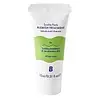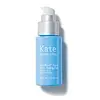What's inside
What's inside
 Key Ingredients
Key Ingredients

 Benefits
Benefits

 Concerns
Concerns

 Ingredients Side-by-side
Ingredients Side-by-side

Water
Skin ConditioningZinc Carbonate
Glyceryl Stearate
EmollientSilica
AbrasiveGlycerin
HumectantSqualane
EmollientSalicylic Acid
MaskingCetearyl Olivate
Sorbitan Olivate
EmulsifyingPhenoxyethanol
PreservativeDextrin
AbsorbentPolydextrose
HumectantAlpha-Glucan Oligosaccharide
CleansingAmylopectin
Niacinamide
SmoothingMaltodextrin
AbsorbentEthylhexylglycerin
Skin ConditioningTocopherol
AntioxidantDisodium EDTA
Biosaccharide Gum-1
HumectantButylene Glycol
HumectantHamamelis Virginiana Leaf Extract
Skin ConditioningCI 77492
Cosmetic ColorantWater, Zinc Carbonate, Glyceryl Stearate, Silica, Glycerin, Squalane, Salicylic Acid, Cetearyl Olivate, Sorbitan Olivate, Phenoxyethanol, Dextrin, Polydextrose, Alpha-Glucan Oligosaccharide, Amylopectin, Niacinamide, Maltodextrin, Ethylhexylglycerin, Tocopherol, Disodium EDTA, Biosaccharide Gum-1, Butylene Glycol, Hamamelis Virginiana Leaf Extract, CI 77492
Water
Skin ConditioningCoconut Alkanes
EmollientPentylene Glycol
Skin ConditioningNiacinamide
SmoothingSalicylic Acid
MaskingCaprylyl Methicone
Skin ConditioningGlycerin
HumectantPropanediol
SolventCetearyl Olivate
Polysilicone-11
Potassium Cetyl Phosphate
EmulsifyingSorbitan Olivate
EmulsifyingCarbomer
Emulsion StabilisingMicrocitrus Australis Fruit Extract
Skin ConditioningMicrocitrus Australasica Fruit Extract
Lens Esculenta Fruit Extract
Skin ConditioningPyrus Malus Fruit Extract
Skin ConditioningCitrullus Lanatus Fruit Extract
Skin ConditioningCitrus Glauca Fruit Extract
HumectantSodium Lactate
BufferingPhytosphingosine
Skin ConditioningAdenosine
Skin ConditioningDecyl Glucoside
Cleansing1,2-Hexanediol
Skin ConditioningSodium PCA
HumectantAlpha-Glucan Oligosaccharide
CleansingMaltodextrin
AbsorbentPolyglyceryl-3 Caprate
EmulsifyingButylene Glycol
HumectantAminomethyl Propanol
BufferingPolysorbate 20
EmulsifyingCaprylhydroxamic Acid
Zinc PCA
HumectantThymol
AntimicrobialTerpineol
MaskingHexylene Glycol
EmulsifyingCaprylyl Glycol
EmollientPolydextrose
HumectantDextrin
AbsorbentAmylopectin
Lactobacillus Ferment
Skin ConditioningPhenoxyethanol
PreservativeDisodium EDTA
Sodium Benzoate
MaskingPotassium Sorbate
PreservativeWater, Coconut Alkanes, Pentylene Glycol, Niacinamide, Salicylic Acid, Caprylyl Methicone, Glycerin, Propanediol, Cetearyl Olivate, Polysilicone-11, Potassium Cetyl Phosphate, Sorbitan Olivate, Carbomer, Microcitrus Australis Fruit Extract, Microcitrus Australasica Fruit Extract, Lens Esculenta Fruit Extract, Pyrus Malus Fruit Extract, Citrullus Lanatus Fruit Extract, Citrus Glauca Fruit Extract, Sodium Lactate, Phytosphingosine, Adenosine, Decyl Glucoside, 1,2-Hexanediol, Sodium PCA, Alpha-Glucan Oligosaccharide, Maltodextrin, Polyglyceryl-3 Caprate, Butylene Glycol, Aminomethyl Propanol, Polysorbate 20, Caprylhydroxamic Acid, Zinc PCA, Thymol, Terpineol, Hexylene Glycol, Caprylyl Glycol, Polydextrose, Dextrin, Amylopectin, Lactobacillus Ferment, Phenoxyethanol, Disodium EDTA, Sodium Benzoate, Potassium Sorbate
Ingredients Explained
These ingredients are found in both products.
Ingredients higher up in an ingredient list are typically present in a larger amount.
Alpha-Glucan Oligosaccharide is a prebiotic. It prevents harmful bacteria from growing on skin by keeping the skin's microbiome in balance.
Another benefit of this ingredient is its antioxidant properties. Antioxidants protect our skin from oxidative damage.
We don't have a description for Amylopectin yet.
Butylene Glycol (or BG) is used within cosmetic products for a few different reasons:
Overall, Butylene Glycol is a safe and well-rounded ingredient that works well with other ingredients.
Though this ingredient works well with most skin types, some people with sensitive skin may experience a reaction such as allergic rashes, closed comedones, or itchiness.
Learn more about Butylene GlycolCetearyl Olivate is an emulsifier and texture enhancer. It is derived from the fatty acids of olive oil and Cetearyl alcohol, and is biodegradable.
As an emulsifier, it is used to prevent oils and waters from separating. It can also
Manufacturers use the name Olivem 1000. This ingredient has been found to preserve the natural microbiome of skin. Having a healthy microbiome helps keep our skin healthy and protects against harmful bacteria. This ingredient is grouped with Sorbitan Olivate under the name Olivem 1000.
Learn more about Cetearyl OlivateDextrin is used to thicken a product and helps bind ingredients together. It is created from starch and glycogen.
As an emulsifier, dextrin prevents ingredients from separating. This helps elongate a product's shelf life.
Studies show coating UV filters with dextrin prevents these ingredients from being absorbed. This helps UV ingredients last longer on the skin.
Learn more about DextrinDisodium EDTA plays a role in making products more stable by aiding other preservatives.
It is a chelating agent, meaning it neutralizes metal ions that may be found in a product.
Disodium EDTA is a salt of edetic acid and is found to be safe in cosmetic ingredients.
Learn more about Disodium EDTAGlycerin is already naturally found in your skin. It helps moisturize and protect your skin.
A study from 2016 found glycerin to be more effective as a humectant than AHAs and hyaluronic acid.
As a humectant, it helps the skin stay hydrated by pulling moisture to your skin. The low molecular weight of glycerin allows it to pull moisture into the deeper layers of your skin.
Hydrated skin improves your skin barrier; Your skin barrier helps protect against irritants and bacteria.
Glycerin has also been found to have antimicrobial and antiviral properties. Due to these properties, glycerin is often used in wound and burn treatments.
In cosmetics, glycerin is usually derived from plants such as soybean or palm. However, it can also be sourced from animals, such as tallow or animal fat.
This ingredient is organic, colorless, odorless, and non-toxic.
Glycerin is the name for this ingredient in American English. British English uses Glycerol/Glycerine.
Learn more about GlycerinMaltodextrin is a polysaccharide. It is derived from starch such as rice, corn, wheat, or potato starch.
In food, Maltodextrin is used to improve the texture and thicken a product. Due to its structure, it can help create a gel texture. As an emulsion stabilizer, it helps keep the ingredients in a product together.
As a polysaccharide, Maltodextrin has moisturizing properties. Polysaccharides are a type of carbohydrate. The top layer of skin uses polysaccharides to retain water, keeping the skin hydrated.
Maltodextrin is water soluble and has a sweet taste.
Learn more about MaltodextrinNiacinamide is a multitasking form of vitamin B3 that strengthens the skin barrier, reduces pores and dark spots, regulates oil, and improves signs of aging.
And the best part? It's gentle and well-tolerated by most skin types, including sensitive and reactive skin.
You might have heard of "niacin flush", or the reddening of skin that causes itchiness. Niacinamide has not been found to cause this.
In very rare cases, some individuals may not be able to tolerate niacinamide at all or experience an allergic reaction to it.
If you are experiencing flaking, irritation, and dryness with this ingredient, be sure to double check all your products as this ingredient can be found in all categories of skincare.
When incorporating niacinamide into your routine, look out for concentration amounts. Typically, 5% niacinamide provides benefits such as fading dark spots. However, if you have sensitive skin, it is better to begin with a smaller concentration.
When you apply niacinamide to your skin, your body converts it into nicotinamide adenine dinucleotide (NAD). NAD is an essential coenzyme that is already found in your cells as "fuel" and powers countless biological processes.
In your skin, NAD helps repair cell damage, produce new healthy cells, support collagen production, strengthen the skin barrier, and fight environmental stressors (like UV and pollution).
Our natural NAD levels start to decline with age, leading to slower skin repair, visible aging, and a weaker skin barrier. By providing your skin niacinamide, you're recharging your skin's NAD levels. This leads to stronger, healthier, and younger looking skin.
Another name for vitamin B3 is nicotinamide. This vitamin is water-soluble and our bodies don't store it. We obtain Vitamin B3 from either food or skincare. Meat, fish, wheat, yeast, and leafy greens contain vitamin B3.
The type of niacinamide used in skincare is synthetically created.
Learn more about NiacinamidePhenoxyethanol is a preservative that has germicide, antimicrobial, and aromatic properties. Studies show that phenoxyethanol can prevent microbial growth. By itself, it has a scent that is similar to that of a rose.
It's often used in formulations along with Caprylyl Glycol to preserve the shelf life of products.
We don't have a description for Polydextrose yet.
Salicylic Acid (also known as beta hydroxy acid or BHA) is a well-known ingredient for treating skin that struggles with acne and clogged pores. It exfoliates both the skin's surface and deep within the pores to help clear out buildup, control oil, and reduce inflammation.
Unlike AHAs (alpha hydroxy acids), salicylic acid is oil-soluble. This allows it to penetrate into pores which makes it especially effective for treating blackheads and preventing future breakouts.
Salicylic acid is also known for its soothing properties. It has a similar structure to aspirin and can calm inflamed or irritated skin, making it a good option for acne-prone skin that is also sensitive.
Concentrations of 0.5-2% are recognized by the U.S. FDA as an over-the-counter topical acne product.
It can cause irritation and/or dryness if one's skin already has a compromised moisture barrier, so it's best to focus on repairing that before introducing this ingredient into your routine.
While salicylic acid does not increase sun sensitivity, it’s still important to wear sunscreen daily to protect your skin.
If you are looking for the ingredient called BHA or Butylated Hydroxyanisole, click here.
Learn more about Salicylic AcidSorbitan Olivate is created from the fatty acids in olive oil and sorbitol.
This ingredient is an oil in water emulsifier. It helps stabilize a product by preventing oils and waters from separating. Sorbitan Olivate also helps hydrate the skin.
Manufacturers sell sorbitan olivate under the name OliveM 1000. OliveM 1000 a multifunctional ingredient. It is self-emulsifying. According to a manufacturer, OliveM 1000 does not disrupt natural skin biome.
Due to its olive oil base, this ingredient may not be fungal-acne safe.
Learn more about Sorbitan OlivateWater. It's the most common cosmetic ingredient of all. You'll usually see it at the top of ingredient lists, meaning that it makes up the largest part of the product.
So why is it so popular? Water most often acts as a solvent - this means that it helps dissolve other ingredients into the formulation.
You'll also recognize water as that liquid we all need to stay alive. If you see this, drink a glass of water. Stay hydrated!
Learn more about Water